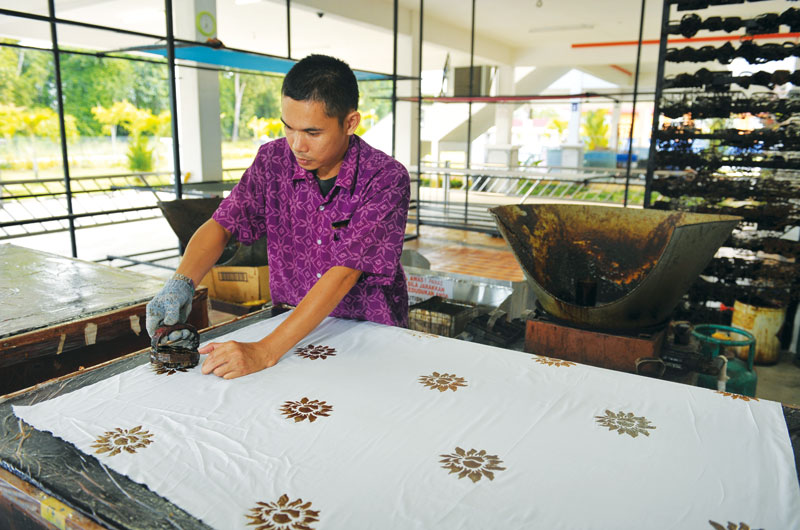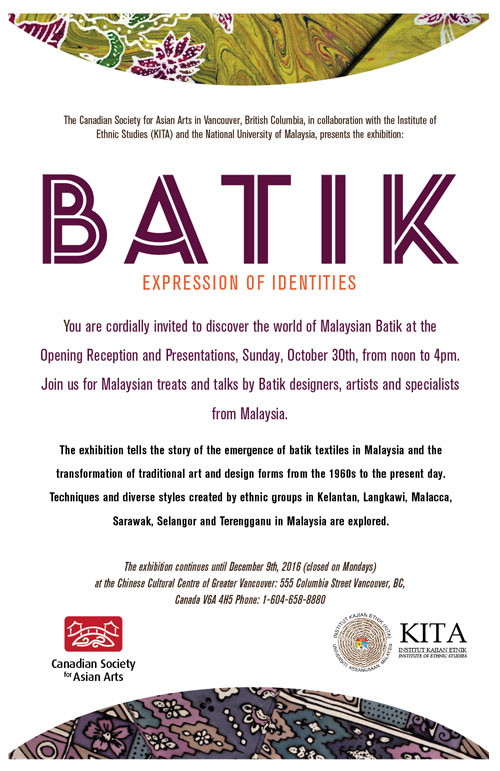
- This event has passed.
Discover Malaysia Through Batik Art: Expressions of Identities
October 30, 2016 @ 12:00 pm - December 9, 2016 @ 5:00 pm PDT

Batik Making at Noor Arfa Batik, Trengganu (Malaysia Tourism Promotion Board)
Discover the beauty of Malaysia through Batik Art this October 30 through December 9th at the Chinese Cultural Centre in Vancouver.
The exhibition tells the story of the emergence of batik textiles in Malaysia, how the traditional and design forms have evolved from the 1960s to the present day. Batik is woven into the cultural identity of the Malaysian people.
What is Batik?
A resist dyeing process in which hot molten wax or rice paste is applied to the surface of fabric as a resist to dyes to form undyed areas of pattern.
This resist is removed by boiling, melting or scraping after dyeing thus creating intricate patterns and designs. Amongst the popular batik are batik canting (hand drawn), batik cap (wax-stamping) and batik sutera saring (silk screen).

Malaysia’s batik production has developed from the traditional method of using the block technique to that of using machines, known as the Integrated Computer Aided Tint System (I.C.A.T.S), alongside the introduction of chemical colouring. Modern technology has enabled more efficient batik production of lasting quality, and has turned batik into one of Malaysia’s more viable commercialized products.
History of Batik in Malaysia
The development of batik in this country originated from the period of the Srivijaya kingdom in the 15th century. During the reign of Sultan Zainal Abidin II, the third Sultan of Terengganu, a royal weaver named Minah Pelangi had produced the kain pelangi sometimes referred to as batik pelangi, using the tie-dye method which is a non-wax-resist process influenced to some degree by the Indian trade textile, the bandhana.
This is followed by the patterned textile, such as the Kedah Batik and Kotak Batik, brought into the country by Indian traders. Both were the same cloth and shared the same technique of production, that of using a wooden block as the printing tool. This wooden block is known as sarang bunga (floral nest) or sarang kayu berukir (engraved wooden nest).
Today, batik is generally regarded as a symbol of national identity. Producers are conscious of the fact that Malaysians are better informed about batik, appreciate good design, quality, colour combinations and the craftsmanship that distinguishes it, as a truly handcrafted Made-In-Malaysia product. Batik Malaysia has evolved being a traditional folk art form to a contemporary batik textile and visual art.
Admission is by Donation.


